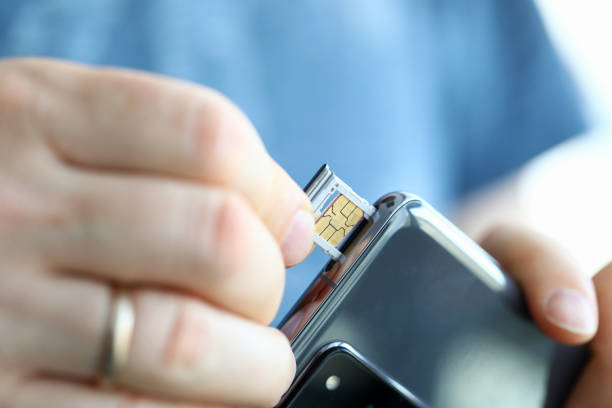With the recent release of the new iPhone, the term eSIM has been heard more and more often. According to Apple, the new iPhone no longer has a SIM card tray, and only the eSIM can be used. In this article, I would like to take a deeper look at the eSIM.
What’s eSIM?
What is an eSIM anyway? Before we begin, let’s review the SIM. A SIM is a physical device that is required to connect to the network of a subscribed service when using a smartphone or tablet. The SIM records subscriber information (identification number, phone number, email address, etc.) to identify the subscriber, and these are linked to a phone number to enable s communication and calling.
Conventionally, SIMs were in the form of an external card, and a SIM card had to be physically inserted into the SIM card tray before using the phone, such as when signing a contract with a new carrier or when changing phone models.
However, with the advent of eSIM (Embedded SIM), the SIM is now embedded in the smartphone, allowing the aforementioned setup process to be performed by software.
In fact, eSIM has existed for some time, and in the case of the iPhone, eSIM has been available since the iPhone XS. However, the U.S. model of the iPhone 14 announced this time eliminates the physical SIM card, allowing only eSIM to be used.
Advantages
Instant Purchase and Use
With eSIM, everything from purchase to start of use is completed online, so there is no need to wait for a physical SIM card to arrive in the mail.
In the past, purchasing a physical SIM card at the local airport or mobile store when traveling abroad was time-consuming and labor-intensive, but with an eSIM, all you need is an Internet connection to make the purchase, so you can use the card immediately after purchasing it over WiFi at your local travel destination.
No Worry about Loss and Physical Problem
In the past, it was necessary to replace the SIM card with a new one when changing the model of a smartphone, or to remove the SIM card from the smartphone and replace it with a local SIM when traveling abroad.
With an eSIM, there is no need to physically remove the SIM card from the phone, and the possibility of losing the SIM card is eliminated.
More Than One Data Plan Available
On the iPhone, more than 8 eSIMs can be stored.
This means that when you travel abroad, you can use the most appropriate service depending on the country or region you are traveling to easily.
Disadvantages
Limited Number of Devices Available
This disadvantage will be resolved in the near future, but older smartphones may not have an eSIM.
Unclear Support Status for eSIMs When Traveling Abroad
Currently, eSIMs are not yet common, and the destination of your international travel may not have an established eSIM support system.
In other words, if you are using a phone that does not come with a physical SIM card tray and your destination does not support eSIM, you may not be able to use your phone as you would like.
You can check the current eSIM support status of telecommunication companies around the world at the Apple website below.
Postscript
How did you enjoy the article about eSIM?
I believe that the number of telecommunication companies that can use eSIMs will continue to increase, and eSIMs may soon become more common than physical SIM cards.



コメント